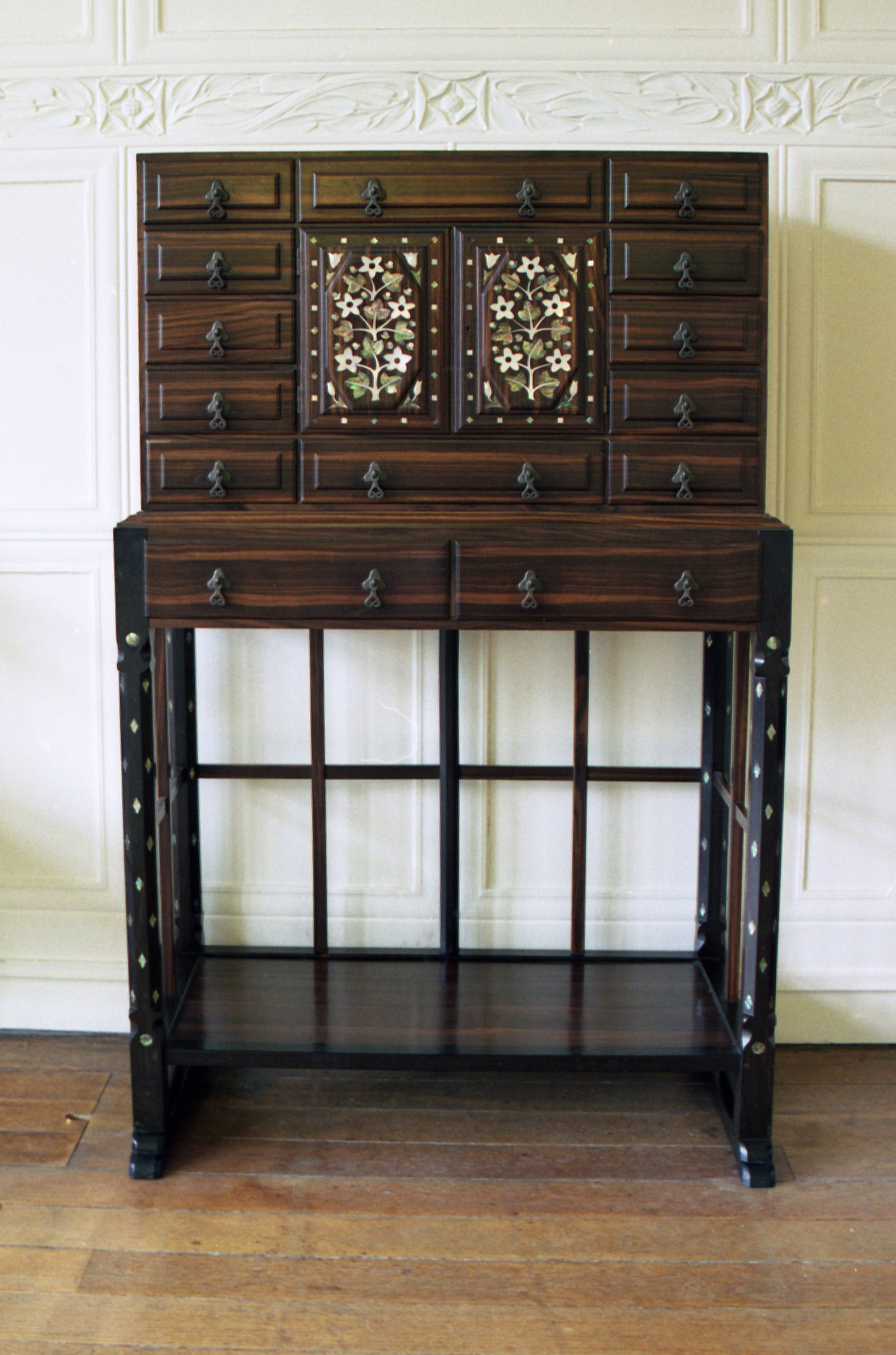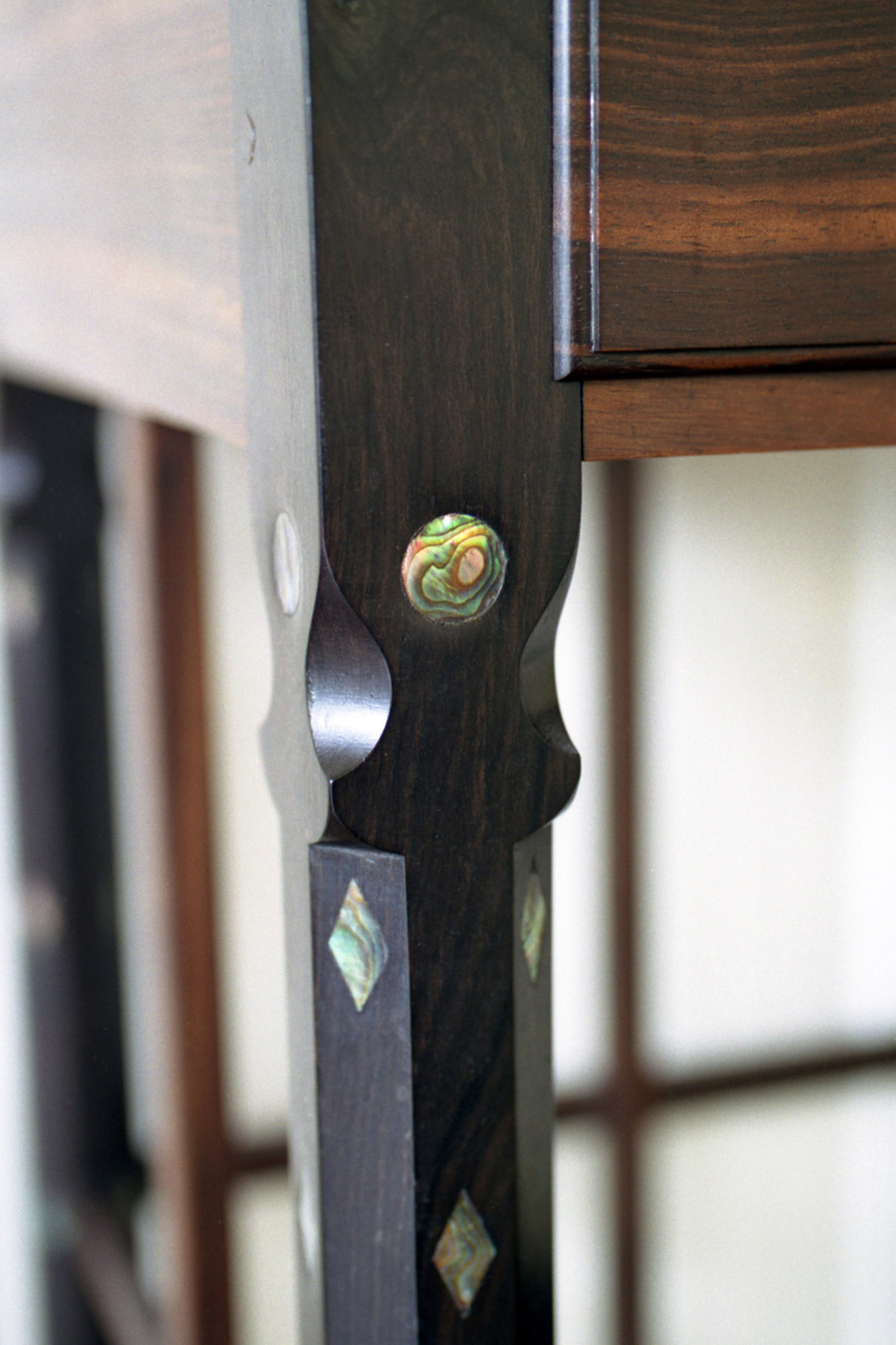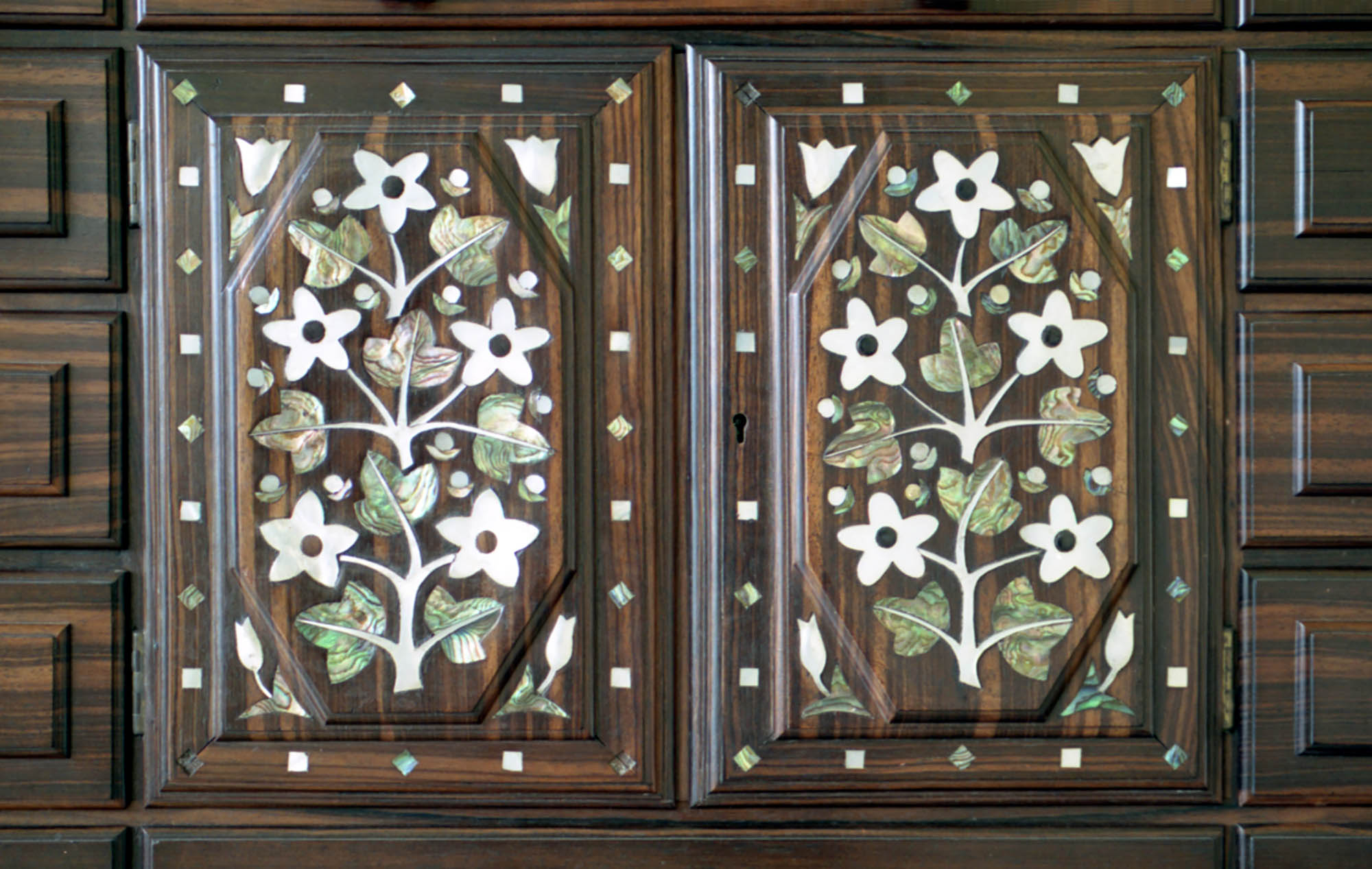What's In Store... Ebony Cabinet
What's in store... interesting objects from Leicester Museums & Galleries Stores.
Published: 23 June 2020
Ebony inlaid cabinet designed by Ernest Gimson and made in his Daneway workshop, 1907.
Bequeathed by Sidney Gimson, 1939.
Made with Macassar ebony and ebony inlaid with mother-of-pearl, with steel handles.

Gimson had an illustrious career; born and raised in Leicester he first trained as a successful architect before turning to craftmanship and becoming a major player in the arts and crafts movement. His cabinet is one of the more exquisite pieces, finely decorated and made with expensive materials.
The legs, the frame of the shelf and the central back support of the stand are in ebony rather than macassar ebony, noticeable from its contrasting grain.
The cabinet’s rectilinear outline is emphasised by the deliberate pattern of drawers and cupboards and the latticework stand. The initial inspiration for this piece came from Spanish and Portuguese 17th-century varguenos – cabinets of drawers and cupboards on a stand. Gimson would have seen such pieces at the South Kensington Museum (now the Victoria & Albert Museum) in London.
The round and diamond-shaped inlays used around the inlaid doors and on the legs were inspired by Byzantine work. The two types of mother-of-pearl inlay glisten and draw the eye to the centre of the cabinet, making it a striking piece of furniture.

This cabinet was shown in Gimson’s exhibition at Debenham and Freebody’s department store, London in 1907. The exhibition was reviewed in Architectural Review in February 1908:
"We can scarcely give higher praise than to say that Mr Gimson’s furniture comes successfully through the ordeal of a 'one-man show.'
It was a notable feature of the last Arts and Crafts Exhibition that many of the furniture makers had so entirely shed the early eccentricities of the revival in furniture design, that some of their work was almost indistinguishable from copies of “period” furniture. Mr. Gimson has, however, maintained his individuality very markedly, and while avoiding vagaries, owes little to the historic English styles.
With inlay he is either very economical, using it just to enliven a piece in which the figure of the wood does not play a large part, or lavish in covering the whole surface of small boxes."

The cabinet is shown in these images on display at Blackwell, The Arts & Crafts House on Lake Windermere, where it was on loan before returning to Leicester Museum & Art Gallery where it can usually be seen in the Arts & Crafts gallery.
More of our Arts & Crafts collection and information about Ernest Gimson and the other designers and makers can be found on our dedicated website: https://gimson.leicester.gov.uk.
